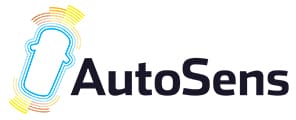08 - 10 October, 2024 | Palau de Congressos, Barcelona
AutoSens Europe 2023 Agenda
Please note: Session times and locations are subject to change
- 9:00am CET
- Thursday 21st September
- Mezzanine Stage
New and Convenient Information Capacity and Related Measurements
- 9:00am CET
- Thursday 21st September
- Minerva Room
Catching the Long Tail of AI Perception: A New Strategy for Data Collection in AI Perception Development
- 9:00am CET
- Thursday 21st September
- Mahy Room
Novel method for testing Lidar sensor
- 9:25am CET
- Thursday 21st September
- Mezzanine Stage
JPEG XS video compression in automotive, a brief introduction
- 9:25am CET
- Thursday 21st September
- Minerva Room
Energy-aware Neural Architecture Search using accurate Virtual Prototypes of AI inference accelerators
- Thursday 21st September
- 9:25am CET
- Minerva Room
Energy-aware Neural Architecture Search using accurate Virtual Prototypes of AI inference accelerators
In this paper, we propose an extension to Neural Architecture Search (NAS) incorporating accurate inference energy prediction. An exemplary dedicated AI accelerator is emulated in a digital twin and power is measured for a dataset of different Neural Networks. These measurements can then be used for energy-aware NAS. In the presentation, the methodology and virtual platform will be presented, before the accuracy of the extended NAS is evaluated.
- 9:25am CET
- Thursday 21st September
- Mahy Room
How silicon-based SPAD sensors enable reliable and cost-optimized lidars today
- 9:50am CET
- Thursday 21st September
- Mezzanine Stage
Panel Discussion: How Should Image Quality in Computer Vision be Utilised for Safety Analysis?
- 9:50am CET
- Thursday 21st September
- Minerva Room
Detecting the unsafe unknowns – What umbrellas, boxes and harvesters have in common
- Thursday 21st September
- 9:50am CET
- Minerva Room
Detecting the unsafe unknowns – What umbrellas, boxes and harvesters have in common
AI-based perception alone cannot ensure the safety of automated vehicles. The presentation discusses the safety aspects of typical perception and planning stacks. It proposes a complementary safety channel to address currently used algorithms’ weaknesses. This safety channel explicitly handles unsafe and unknown objects and ensures that the automated vehicle never collides with any of them.
Key takeaways:
• AI-based perception alone cannot ensure the safety of automated vehicles.
• Unknown objects need to be detected for safe automated driving.
• A safety channel with Dynamic Grid technology ensures collision-free driving.
- 9:50am CET
- Thursday 21st September
- Mahy Room
Advanced Sensor for LiDAR
- 10:10am CET
- Thursday 21st September
- Minerva Room
Artificial Intelligence and Machine Learning Q&A Panel
- 10:10am CET
- Thursday 21st September
- Mahy Room
Introduction to Silicon Photonics and its applications to FMCW LiDAR sensing
- 11:15am CET
- Thursday 21st September
- Mezzanine Stage
Virtualization of optical qualification for windshield camera zones
- 11:15am CET
- Thursday 21st September
- Minerva Room
A Single-Chip, Low-Power Autonomous Driving Implementation
- 11:15pm CET
- Thursday 21st September
- Mahy Room
ADAS and AV Sensor Suite: Emerging Developments and Pricing Trends
- 11:40am CET
- Thursday 21st September
- Mezzanine Stage
Improving camera optics for windshields. Introducing novel interlayer and measurement technology
- 11:40am CET
- Thursday 21st September
- Minerva Room
Network-on-Chip Design for the Future of ADAS AI/ML Semiconductor Devices
- 11:40am CET
- Thursday 21st September
- Mahy Room
How developments related to automated driving are influencing the sensor and computing markets
- 12:05pm CET
- Thursday 21st September
- Mezzanine Stage
Windscreen Optical Quality
- 12:05pm CET
- Thursday 21st September
- Minerva Room
Panel Discussion: Zonal, Central, and Chiplet Trends – What are the Architecture Implications from a Vision and Sensing Perspective?
- 12:05pm CET
- Thursday 21st September
- Mahy Room
Technical semiconductor management in times of BANI (Brittle, Anxious, Nonlinear, Incomprehensible)
- 12:30pm CET
- Thursday 21st September
- Mezzanine Stage
Optimising Optics: Advancing Windshield Technology Q&A Panel
- 12:30am CET
- Thursday 21st September
- Mahy Room
The road to autonomous cars: technology, ecosystem, and market review
- 2:10pm CET
- Thursday 21st September
- Mezzanine Stage
The Safety Performance of the Waymo Driver
- 2:40pm CET
- Thursday 21st September
- Mezzanine Stage





















